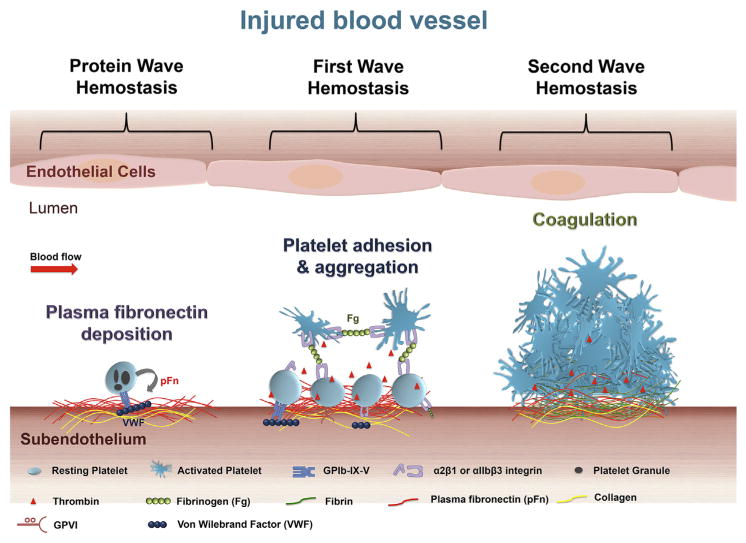Figure 1.
Roles of platelets in thrombosis and hemostasis. After vascular injury, plasma fibronectin quickly deposits onto the injured vessel wall. Platelets may also release their internalized plasma fibronectin from their granules. These plasma and platelet sources of fibronectin likely synergistically contribute to the protein wave of hemostasis. Platelet adhesion and aggregation (i.e. the classical first wave of hemostasis) are then initiated via platelet receptors and their ligands. Activated platelets also provide a negatively charge surface and mediate cell-based thrombin generation, which contributes to blood coagulation that is initiated following tissue damage (i.e. the classical second wave of hemostasis). In a growing hemostatic plug/thrombus, the fibrin and fibronectin matrix is usually formed in the interface between the injured vessel wall and platelet plug.

